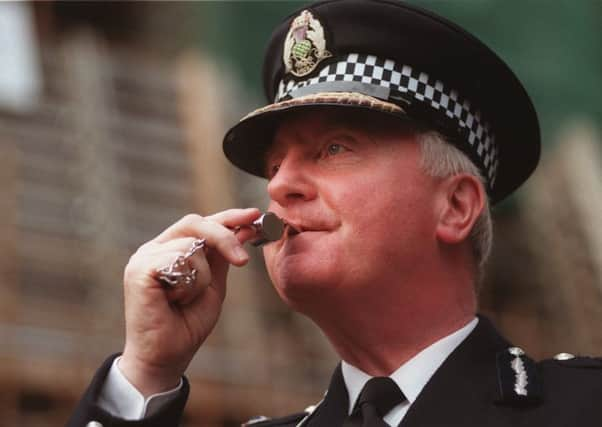Obituary: Sir John Orr, former Chief Constable, who headed the Lockerbie bombing investigation


When John Orr joined Renfrew and Bute Constabulary he was just 15 and had been inspired by the example of a family friend, a local police officer.
He remained a cadet for the next three years until joining the ranks of his local Kilmarnock Burgh force in 1964. At that time there could have been little or no hint of the high office he would ultimately achieve as he moved on to Cumbria and then Ayrshire Constabularies, arriving at Strathclyde Police in 1975.
Advertisement
Hide AdAdvertisement
Hide AdThere he made his mark as a detective chief superintendent and joint head of the force’s CID – an officer of the old school who had come up through the ranks, while gaining an Open University BA and a diploma in forensic medicine, and one who fully understood life at the coalface.
It made him eminently suitable to take the helm of the force – then Scotland’s largest police authority – but not until he had undertaken perhaps the most challenging and significant role in the country’s criminal history: heading the investigation into the downing of Pan Am Flight 103 over Lockerbie.
John Orr was born in Kilmarnock, the son of Margaret and Samuel Orr, a wool blender at the town’s BMK carpet factory. He was educated at James Hamilton Academy, Kilmarnock and became a police cadet in 1961, proving down the years to be a real people person and an officer always regarded as a gentleman.
During his first period with the Strathclyde force, a 15-year spell until 1990, he was involved in developing HOLMES, the Home Office Large Major Enquiry System, a computerised administrative support system to collate and manage data during complex major investigations.
It was during his tenure as joint head of CID that the Lockerbie disaster unfolded when a bomb exploded on the aircraft as it crossed over the town, en route to New York, on December 21, 1988. All 259 people on board and 11 people on the ground were killed. Orr, who had almost 25 years’ policing experience behind him, was appointed senior investigating officer.
Although always modest about his own achievements he was hugely proud of the enormous commitment and dedication of all his team members, many of whom worked in particularly difficult and emotionally-challenging circumstances. He built up relations with international law agencies, including the FBI whose former director Robert Mueller was US assistant attorney general when indictments were issued for the bombing’s two Libyan suspects.
Despite the lengthy and painstaking investigation, only one man, Abdelbaset al-Megrahi was convicted and died after being released from prison on compassionate grounds.
Orr was made an OBE in 1992 in recognition of his significant contribution to the investigation and his experiences led to him lecturing extensively in Europe, Indonesia, the USA and Canada on disaster planning, administration and investigation.
Advertisement
Hide AdAdvertisement
Hide AdMeanwhile he had been appointed Deputy Chief Constable of the Dumfries and Galloway force, in 1990, where he stayed for four years until spending a year as Assistant Inspector of Constabulary for Scotland.
He took on the role as chief constable of Strathclyde Police in 1996 and the following year graduated from the FBI’s National Executive Institute in Washington and was awarded the Queen’s Police Medal. During his time at the helm in Glasgow he also created the Spotlight initiative, a version of zero-tolerance policing, which targeted specific types of crime and led to reduced crime rates.
He stepped down from the post in 2001 – the year he was knighted – having also held roles as president of the Association of Chief Police Officers in Scotland, chairman of its crime committee and been a member of the Scottish Crime Prevention Council.
Orr was also a deputy lieutenant for Dumfries and chaired the trustees of the Cash for Kids charity.
But away from policing his greatest love – bar family – was Kilmarnock Football Club of which he was chairman and honorary president.
He grew up in the town’s Onthank area and first attended Rugby Park, aged just six or seven, with his father and uncle. He would later take his two sons to watch his team, attending home and away games whenever possible.
His son Gordon said his father was greatly honoured to become chairman: “He helped oversee a successful spell including appointing the management duo of Jim Jefferies and Billy Brown.
“After stepping aside as chairman in 2003 he took up the ambassadorial role of honorary president. He continued to attend Rugby Park until this season when ill health would prevail. Even from his hospital bed he was thrilled at the recent victory over Celtic which helped keep his spirits up.”
He is survived by his wife Lady Joan, sons Michael and Gordon, both detectives, daughter Alison, brother Jim, also a detective, sister Margaret and eight grandchildren.
ALISON SHAW